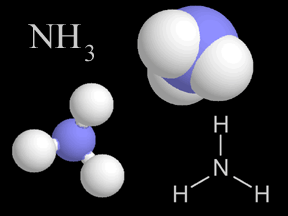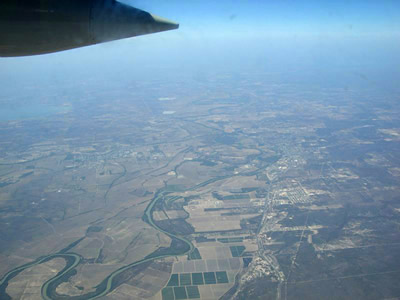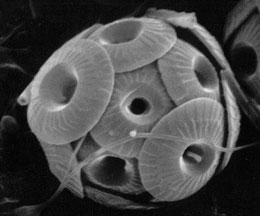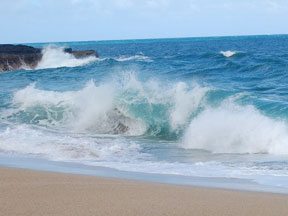Click on image for full size
Randy Russell / Windows to the Universe
Aerosols: Tiny Particulates in the Air
When you look up at the sky, you are looking at more than just air. There are also billions of tiny bits of solid and liquid floating in the atmosphere. Those tiny floating particles are called aerosols or particulates.
Some aerosols are so small that they are made only of a few molecules – so small that they are invisible because they are smaller than the wavelength of light. Larger aerosols are still very small, but they are visible.
There are hundreds or thousands of little aerosols in each cubic centimeter of air. Some of them are natural and others are released into the air by humans. Natural sources of aerosols include dust from dry regions that is blown by the wind, particles released by erupting volcanoes or forest fires, and salt from the ocean.
We, humans, add aerosols to the atmosphere too. Aerosols are a part of air pollution from cars, power plants, and factories that burn fossil fuels.
Some aerosols are released into the atmosphere, others are made in the atmosphere. For example, sulfate aerosols are made in the atmosphere from sulfur dioxide released from power plants.
In general, the smaller and lighter a particle is, the longer it will stay in the air. Larger particles tend to settle to the ground by gravity in a matter of hours whereas the smallest particles (less than 1 micrometer) can stay in the atmosphere for weeks and are mostly removed by precipitation.
For several reasons, aerosols affect climate. Aerosols help clouds to form in the sky and the number and types of clouds affects climate. Certain types are able to scatter or absorb sunlight, which affects climate. Aerosols that scatter light can make interesting distortions in the sky, called atmospheric optics.
The aerosols that are from air pollution are hazardous to human health. When the little particles get deep into a person’s lungs it can make him or her very ill. Aerosols can also limit visibility, causing haze in many parts of the world.















